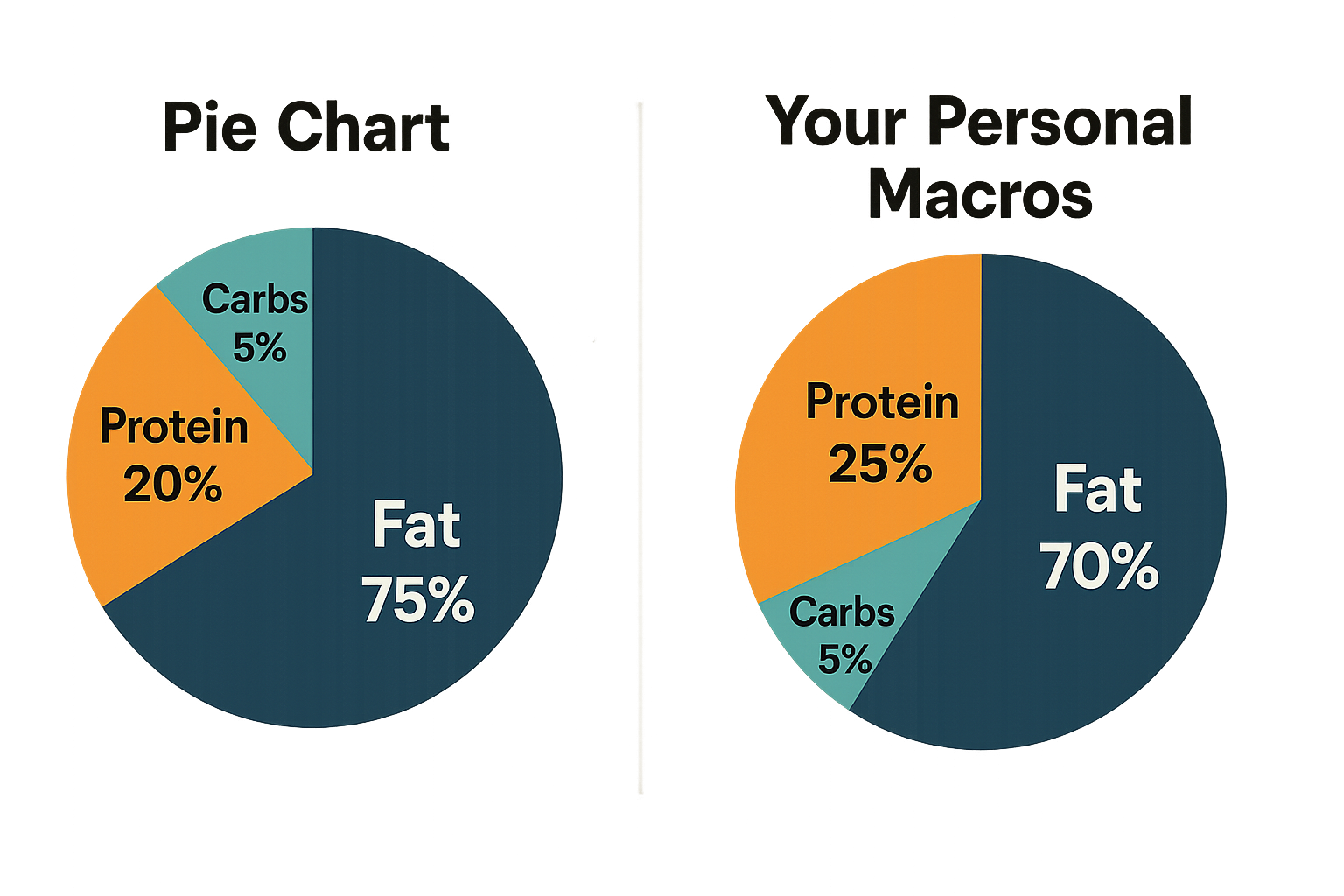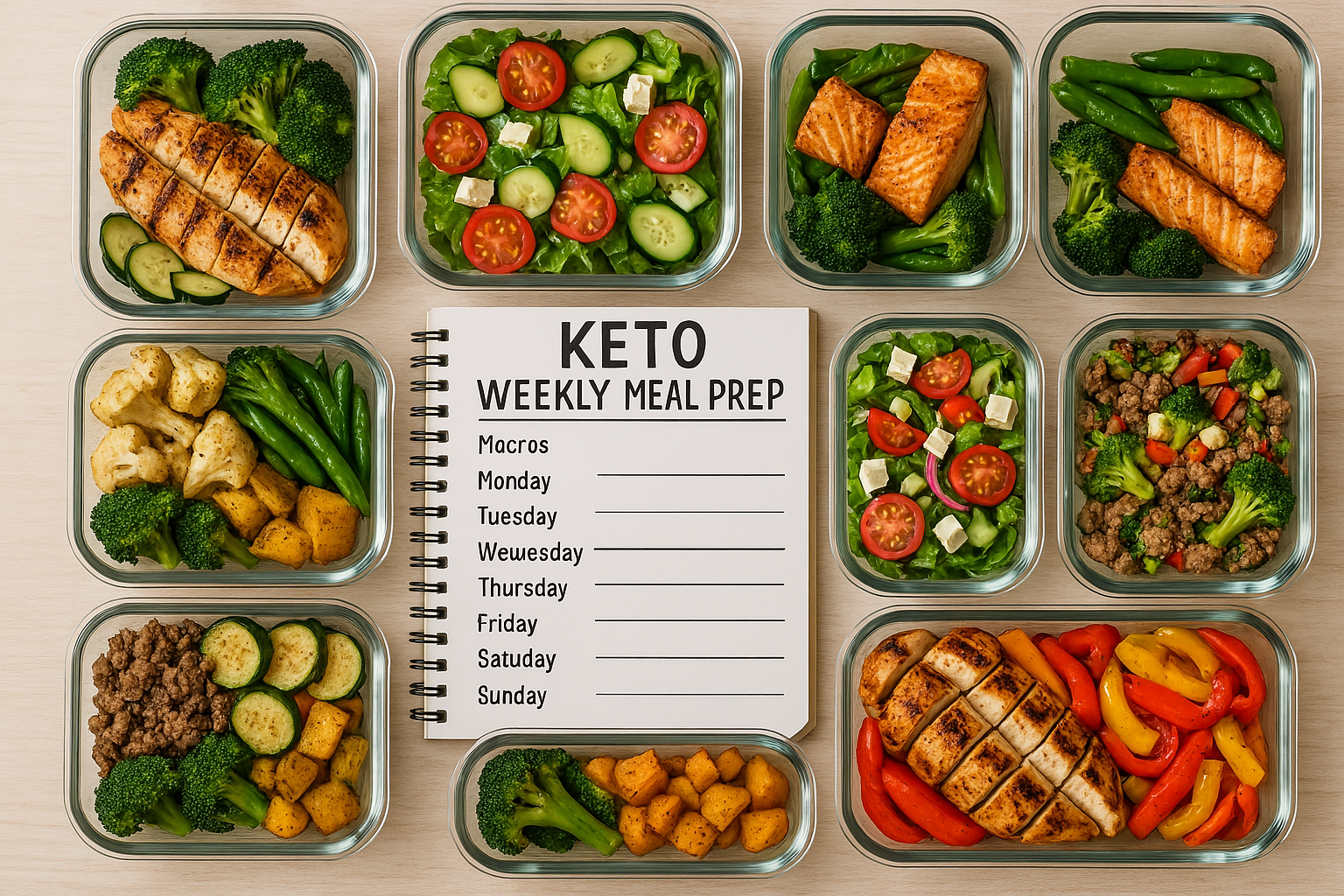Starting keto? One of the first terms you'll encounter is "macros." Understanding and calculating your keto macros (macronutrients – fat, protein, and carbohydrates) is fundamental to achieving and maintaining ketosis, the state where your body burns fat for fuel.
While the general keto ratio is often cited as 70% fat, 25% protein, and 5% carbs, your personal needs can vary based on factors like your age, sex, weight, height, activity level, and goals (weight loss, maintenance, muscle gain). Using a keto macros calculator helps determine your specific targets.
Why Do Keto Macros Matter?
Getting your macros right is crucial for several reasons:
- Achieving Ketosis: Keeping carbohydrate intake very low (typically under 20-50g net carbs) is non-negotiable. This forces your body to switch from using glucose to using fat (and ketones) for energy. (See our Beginner's Guide for more on ketosis).
- Fueling Your Body: Fat becomes your primary energy source. Eating enough healthy fat prevents fatigue and keeps you satisfied. (Find great fat sources on our Keto Shopping List and incorporate them with Easy Keto Recipes).
- Preserving Muscle: Adequate protein intake is vital to prevent muscle loss, especially during weight loss.
- Optimizing Results: Tailoring macros to your body and goals helps maximize fat burning, energy levels, and overall well-being.
 A calculator helps determine your specific macro needs, not just general guidelines.
A calculator helps determine your specific macro needs, not just general guidelines.
How to Use a Keto Macro Calculator
Most online keto calculators (including ours, if available!) follow these steps:
- Enter Personal Information: Input your age, sex, current weight, height, and activity level (sedentary, lightly active, moderately active, very active). Be honest about your activity level!
- Set Your Goal: Choose whether you want to lose weight, maintain weight, or gain muscle.
- Choose Carb Limit: Most calculators default to 20-25g net carbs, which is a good starting point for most people to ensure ketosis.
- Determine Protein Needs: This is often calculated based on your lean body mass and activity level (e.g., 0.8-1.2 grams of protein per pound of lean body mass). Adequate protein is crucial.
- Calculate Fat Intake: Fat makes up the rest of your daily calories. The calculator determines this amount after accounting for the calories from your set carb and protein targets.
- Consider Calorie Deficit/Surplus: If your goal is weight loss, the calculator will typically suggest a calorie deficit (e.g., 15-25%). For muscle gain, it might suggest a small surplus.
The Output: The calculator will provide your estimated daily needs in:
- Calories
- Grams of Fat
- Grams of Protein
- Grams of Net Carbohydrates
Tracking Your Macros
Calculating your macros is the first step; tracking your intake, especially initially, is key to ensuring you're meeting those targets. This complements other ways of monitoring your progress, like testing your ketone levels.
 Using a food scale and tracking app helps ensure accuracy.
Using a food scale and tracking app helps ensure accuracy.
- Use a Tracking App: Apps like Cronometer, Carb Manager, or MyFitnessPal make tracking easy. You can scan barcodes or search for foods.
- Weigh Your Food: Especially for calorie-dense foods like fats and proteins, using a digital food scale provides much more accuracy than estimating.
- Focus on Net Carbs: Remember, Net Carbs = Total Carbohydrates - Fiber - Sugar Alcohols (use caution with these, as some can still impact blood sugar). Most apps calculate this for you.
- Plan Ahead: Knowing your macros helps you plan meals that fit your targets. (Check out our Keto Meal Planning Guide!)
 Meal prepping based on your calculated macros sets you up for success.
Meal prepping based on your calculated macros sets you up for success. - Don't Obsess, But Be Mindful: Aim to get close to your targets, but don't stress over hitting them perfectly every single day. Consistency is more important than daily perfection. Pay closest attention to keeping carbs low and meeting your protein goal. Adjust fat intake based on hunger and satiety. (Worried about mistakes? Read Common Keto Mistakes).
Adjusting Your Macros Over Time
Your macro needs aren't set in stone. You may need to adjust them as:
- You lose weight.
- Your activity level changes.
- Your goals shift (e.g., from weight loss to maintenance).
- You notice changes in energy, hunger, or performance.
Recalculate your macros periodically (e.g., every 10-15 lbs of weight loss or if your activity level significantly changes) and listen to your body's feedback. (Hitting a stall? See our guide on Overcoming Keto Plateaus).
Using a keto macros calculator provides a personalized roadmap for your ketogenic journey, empowering you to fuel your body effectively and achieve your health goals.
